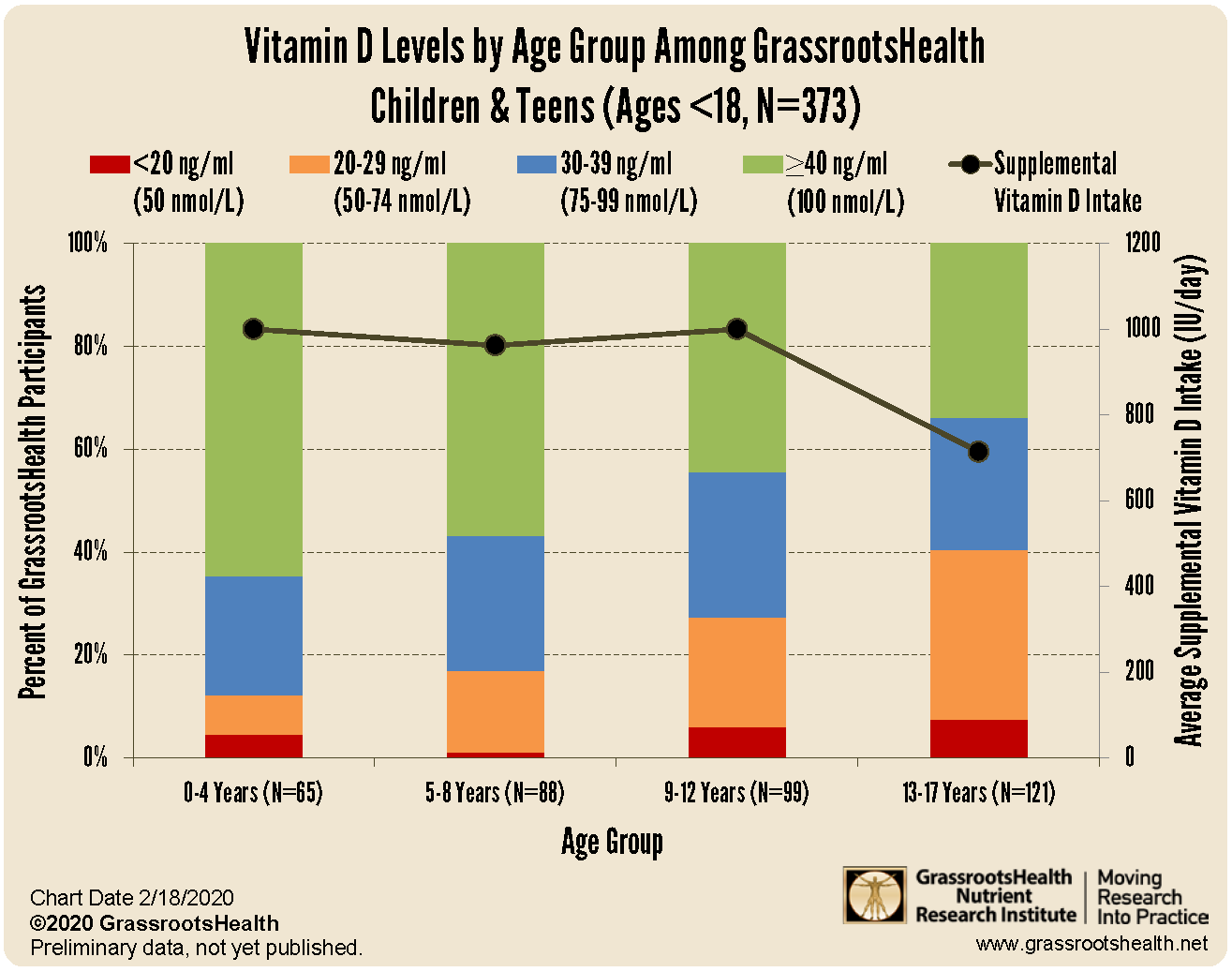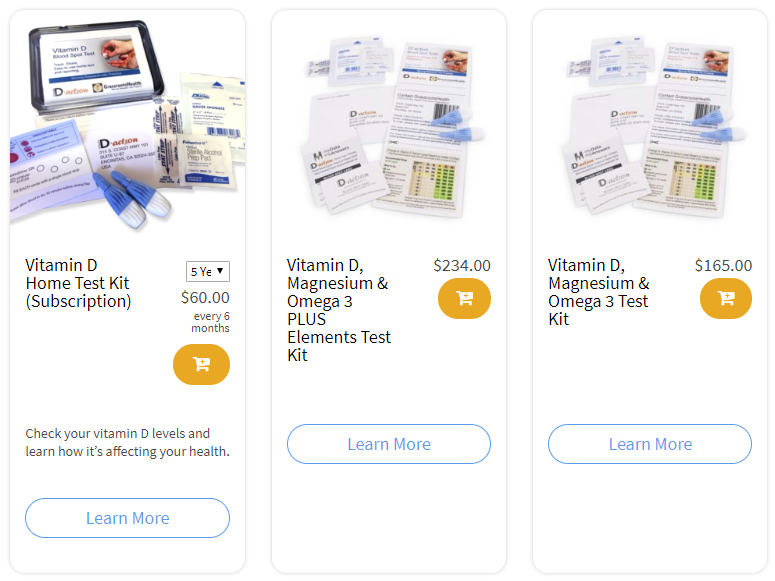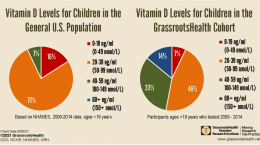Published on March 3, 2020
 Our last post covered a story about one of our employees whose 12 year old son recently had a vitamin D level of 18 ng/ml (what a surprise!); we also briefly looked at vitamin D trends among children and teens (under the age of 18) in the general population. There was a clear decline in vitamin D levels as children age, with the highest prevalence of deficiency among older teenagers.
Our last post covered a story about one of our employees whose 12 year old son recently had a vitamin D level of 18 ng/ml (what a surprise!); we also briefly looked at vitamin D trends among children and teens (under the age of 18) in the general population. There was a clear decline in vitamin D levels as children age, with the highest prevalence of deficiency among older teenagers.
Do Children in the GrassrootsHealth Cohort Have Better Results?
A previous analysis compared vitamin D levels of children in the general population, using the National Health and Nutrition Examination Survey (NHANES) 2009-2010 data set, to children in the GrassrootsHealth cohort, and found that those in the GrassrootsHealth cohort had higher vitamin D levels overall. In the current analysis, we were able to break down the GrassrootsHealth data by age group to identify if a similar trend seen in the general population of decreasing vitamin D levels by age existed in this population.
- Among all GrassrootsHealth participants younger than 18 years old, 5% have vitamin D levels less than 20 ng/ml, 21% have levels between 20-29 ng/ml, 26% have levels between 30-39 ng/ml, and 47% have levels at or above 40 ng/ml.
- The chart shows the breakdown of levels by age group. As age increased, the percent of participants with levels at or above 40 ng/ml decreased, from about two-thirds for those 0-4 years to about one-third for those 13-17 years.
- While vitamin D intake should increase as body weight increases, the black line on the chart shows that intake remained the same or decreased as age increased which is likely the main cause of the decreasing vitamin D levels with age.
The Importance of Vitamin D Testing Increases as Our Children Grow
As children grown, and as they start to take on the responsibility of taking their own supplements, it is important to make sure their vitamin D intake is enough to accommodate their growth. We cannot know unless we test regularly! Test your children’s level today and take steps to keep them within a target of 40-60 ng/ml or 100-150 nmol/L! Through GrassrootsHealth Nutrient Research Institute, you can also test your essential elements magnesium, copper, zinc and selenium, toxins such as lead, mercury and cadmium, as well as your omega-3 levels, inflammation levels and thyroid stimulating hormone (TSH) level. Log on to the test selection page (click the link below) to get your tests and see for yourself if your levels can be improved.
Make sure you track your results before and after, about every 6 months!
Click Here to Access the Test Page
How can I track my nutrient intake and levels over time?
To help you track your supplement use and nutrient levels, GrassrootsHealth has created the Personal Health Nutrient Decision System called
For each specific supplement, you can track what days you take it, how much, and many other details. This will help you know your true supplemental intake and what patterns of use work for you to reach and maintain optimum nutrient levels. Check it out today!









